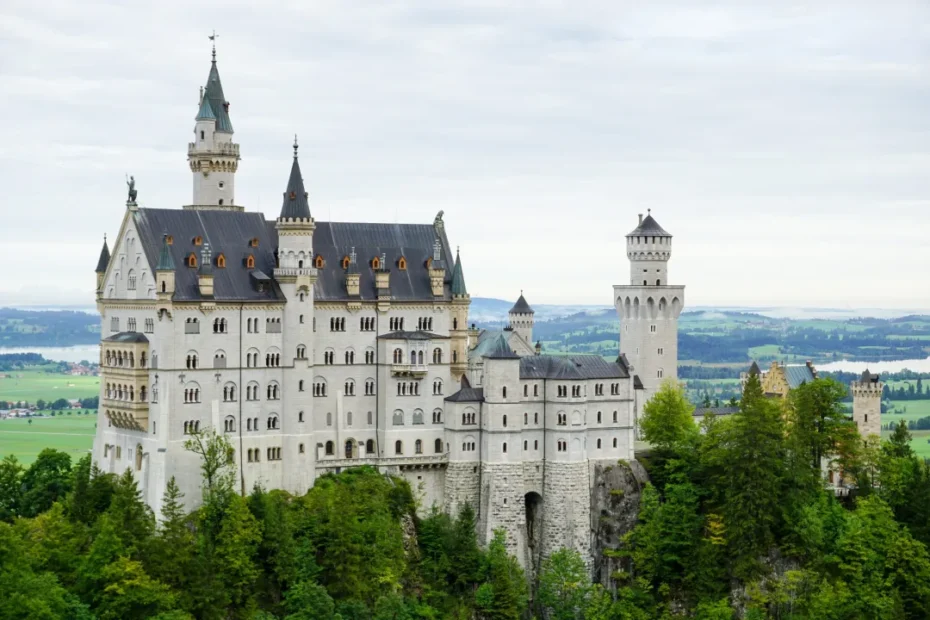
Neuschwanstein Castle, located in Bavaria, Germany, is a stunning 19th-century Romanesque Revival palace perched dramatically on a rugged hill above the village of Hohenschwangau. Commissioned by King Ludwig II of Bavaria, the castle was intended as a personal retreat and homage to Richard Wagner, the renowned composer whom the king greatly admired.
Construction of Neuschwanstein began in 1869 and was never fully completed; only about a third of the planned rooms were finished before Ludwig’s death in 1886. The castle’s design was heavily influenced by Ludwig’s romantic and fantastical visions, with elements inspired by Wagner’s operas and medieval German architecture.
Neuschwanstein’s picturesque setting and fairy-tale appearance have earned it the nickname “the castle of the fairy-tale king” and have made it one of the most iconic and recognizable landmarks in Germany. It is also said to have inspired the design of the Sleeping Beauty Castle at Disneyland.
Today, Neuschwanstein Castle is one of Germany’s most popular tourist attractions, drawing millions of visitors each year who come to admire its stunning architecture, interior decorations, and panoramic views of the surrounding Bavarian countryside.
Architectural Features: Neuschwanstein Castle is renowned for its stunning architecture, characterized by its romanticized medieval style. The exterior features numerous towers, turrets, and ornate facades, while the interior boasts elaborate decorations, including intricate woodcarvings, colorful murals depicting scenes from Wagner’s operas, and lavish furnishings.Location and Surroundings: Situated near the town of Füssen in southwest Bavaria, Neuschwanstein Castle is nestled amidst the breathtaking scenery of the Bavarian Alps. Its perch atop a rugged hill offers commanding views of the surrounding landscape, including the picturesque Alpsee Lake and the nearby Hohenschwangau Castle, where Ludwig II spent much of his childhood.King Ludwig II: The castle’s patron, King Ludwig II of Bavaria, was a fascinating figure known for his eccentricities and romantic inclinations. Often referred to as the “fairy-tale king” or the “mad king,” Ludwig was deeply passionate about the arts, particularly music and theater, and he famously supported the composer Richard Wagner. Neuschwanstein Castle was intended as a personal refuge where Ludwig could immerse himself in his fantasies away from the pressures of royal life.Construction Challenges: The construction of Neuschwanstein Castle was a monumental undertaking fraught with challenges. Delays, cost overruns, and logistical issues plagued the project, and Ludwig’s ambitious vision for the castle was never fully realized. Despite its incompleteness, however, the castle remains a testament to Ludwig’s grandiose aspirations and his enduring legacy as a patron of the arts.Tourism: Neuschwanstein Castle attracts millions of visitors from around the world each year, making it one of Germany’s most popular tourist destinations. Guided tours offer visitors the opportunity to explore the castle’s interior rooms, including the opulent Throne Room, the ornate Singer’s Hall, and Ludwig’s private chambers, providing insight into the king’s extravagant lifestyle and artistic tastes.
Overall, Neuschwanstein Castle continues to captivate visitors with its enchanting beauty, romantic history, and timeless allure, ensuring its status as an enduring symbol of Bavarian culture and heritage.
